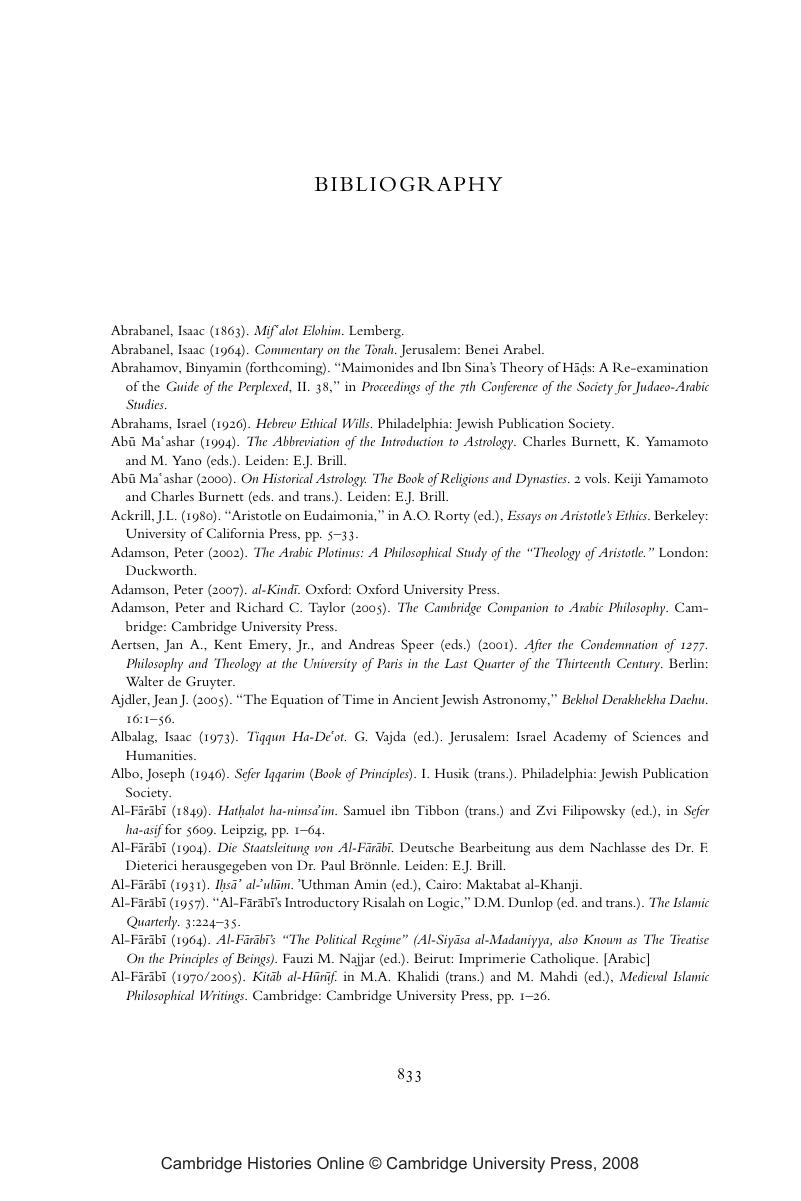Bibliography
Published online by Cambridge University Press: 28 May 2009
Summary

- Type
- Chapter
- Information
- The Cambridge History of Jewish PhilosophyFrom Antiquity through the Seventeenth Century, pp. 833 - 886Publisher: Cambridge University PressPrint publication year: 2008



